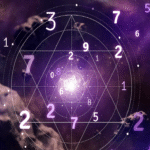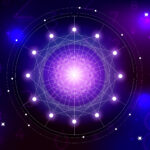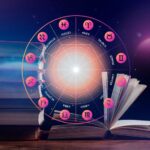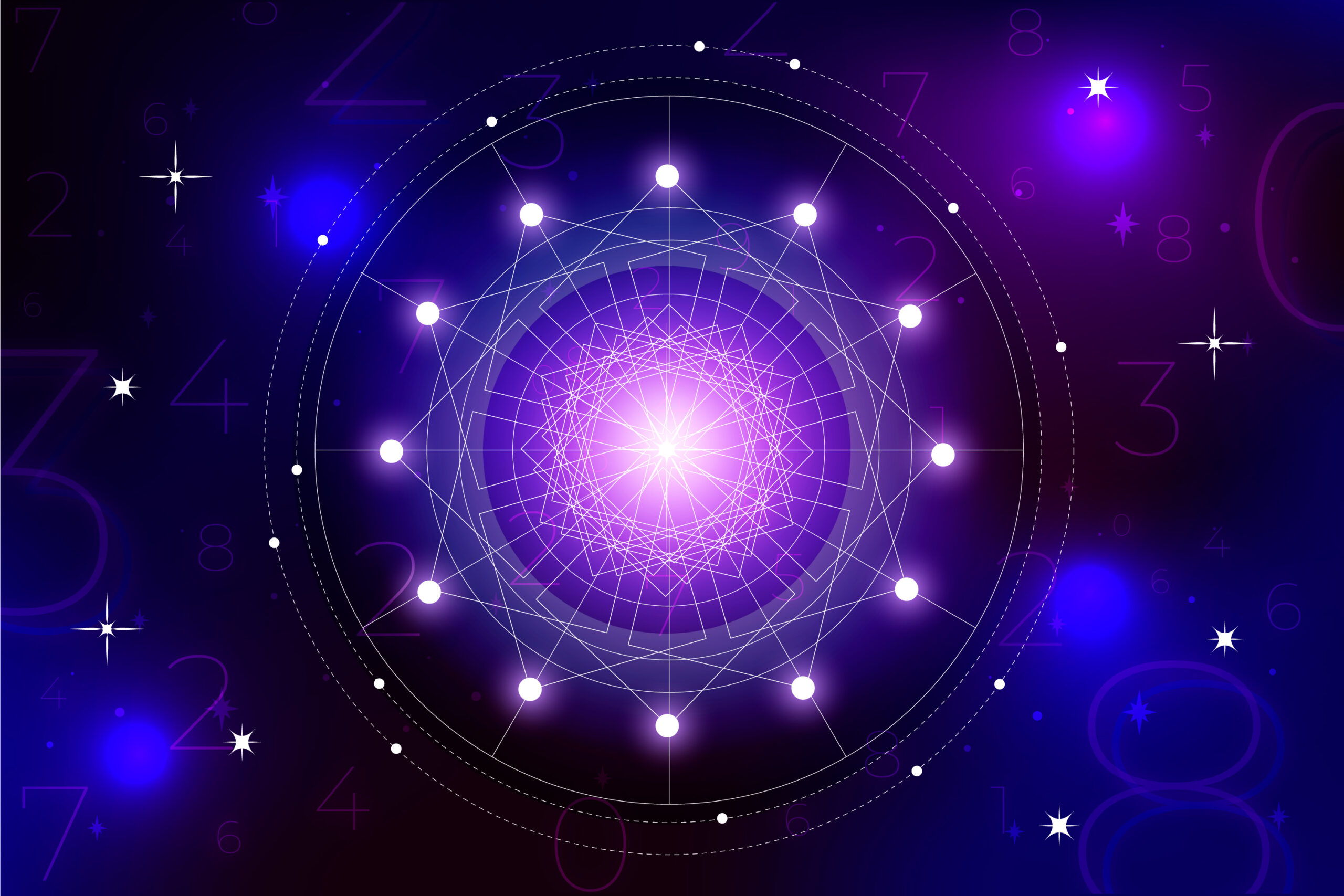Welcome to the Cosmic Map: The Starry Path of the Moon
Embark on a captivating journey into one of the most ancient and insightful layers of Jyotish (Vedic Astrology): the Nakshatras, or Lunar Mansions. Predating the 12 Rashis (signs), these 27 star clusters form the true backdrop against which the Moon (Chandra) especially, and all Grahas (planets), transit. This guide is your map to Understanding Nakshatras, exploring their Lunar Mansions Meaning, their unique Vedic Astrology Symbols, ruling deities, and how they add profound depth to Planetary Interpretation beyond the Rashi placement. Discovering your Janma Nakshatra (Birth Star) is a cornerstone of Jyotish self-discovery.
First Stop: The Ancient Sky – Origins of the Nakshatras
(The Traditional Jyotishi’s View)
Our journey begins in the earliest Vedic times, where the movement of the Moon against the fixed stars was meticulously observed for timing rituals and understanding celestial influence.
- Historical Context: The Nakshatras are fundamental to Vedic culture and astrology, mentioned in the Vedas themselves.
- They represent 27 divisions of the ecliptic (approximately 13 degrees 20 minutes each), each associated with a specific star or asterism, a ruling deity (Devata), a symbol (Pratima), a power (Shakti), and a planetary ruler based on the Vimshottari Dasha system. They are considered the ‘wives’ of Chandra (Moon), representing the specific environments or energies the Moon experiences as it travels.
- Classical Techniques:
- Janma Nakshatra: The Nakshatra occupied by the Moon at the time of birth is critically important. It reveals core personality traits, mental disposition, health tendencies, and determines the starting point for the Vimshottari Dasha cycle, the primary predictive system.
- Nakshatra Pada: Each Nakshatra is further divided into 4 Padas (quarters) of 3 degrees 20 minutes each. A planet’s Pada placement links it to a specific Navamsa sign, adding another layer of precision.
- Muhurta (Electional Astrology): Choosing auspicious timing heavily relies on the Moon’s transit through favourable Nakshatras for specific activities (e.g., Rohini for planting, Pushya for learning, Swati for business).
- Traditional Interpretations: Each Nakshatra carries a complex web of meanings derived from its deity, symbol, mythology, and planetary ruler. For example, Ashwini (ruled by Ketu, deity Ashwini Kumaras, symbol horse head) signifies initiation, speed, healing. Bharani (ruled by Venus, deity Yama, symbol yoni) signifies transformation, restraint, judgment. Rohini (ruled by Moon, deity Brahma, symbol cart) signifies growth, fertility, beauty.
- Expert Insight (Traditional Source): “The Nakshatras are the subtle energies residing in the celestial sphere, influencing the mind (Chandra) and destiny. Knowledge of the Janma Nakshatra is the key to understanding the unfolding of life through the Dashas.” – Principle derived from classical Jyotish teachings.
- Hidden Wisdom: Gandanta: The junction points between water signs (Cancer, Scorpio, Pisces) and fire signs (Aries, Leo, Sagittarius) are considered sensitive zones, particularly the final Padas of Ashlesha, Jyeshtha, Revati and the first Padas of Ashwini, Magha, Mula Nakshatras. Planets placed here (especially the Moon or Lagna) indicate karmic knots or challenging transitions requiring special attention.
- Crossing the Bridge: Where Stars Meet Psyche
As our journey continues, the rich symbolism of the Nakshatras is explored not just for its predictive value but for its deep psychological insights. The deities, myths, and symbols associated with each Nakshatra are seen as archetypes residing within the collective unconscious and influencing individual personality and motivation at a profound level, adding depth to Planetary Interpretation.
Second Stop: Contemporary Interpretation Landscape
(The Modern Jyotishi’s Approach)
Here, Nakshatras are celebrated for the incredible nuance and depth they bring to understanding personality, behaviour, and relationship dynamics.
- Contemporary Methods: Modern Jyotishis place strong emphasis on the Nakshatras occupied by the Lagna (Ascendant), Chandra (Moon), Surya (Sun), and the Atmakaraka planet. The Nakshatra lord (based on Vimshottari Dasha sequence) and its condition are also analyzed. Nakshatra analysis is key for Relationship Compatibility (Nakshatra Koota matching) and understanding core motivations.
- Psychological Insights (Vedic Lens): Each Nakshatra reveals specific psychological patterns, talents, challenges, and spiritual inclinations. For example, individuals with prominent placements in Ardra (ruled by Rahu, deity Rudra) might experience intense emotional storms leading to transformation. Those strong in Swati (ruled by Rahu, deity Vayu) may value independence and diplomacy. Understanding the Nakshatra provides far more specific psychological insight than the Rashi alone.
- Evolving Interpretations: The myths and symbols of the Nakshatras are explored through lenses of archetypal psychology, comparative mythology, and even quantum concepts (linking Nakshatra energies to vibrational frequencies). Their relevance is applied to modern careers and life challenges.
- Technique Deep Dive: Nakshatra Compatibility (Koota Matching): This traditional system assesses marital compatibility based on comparing the Janma Nakshatras of the couple across various factors (Kootas) like temperament (Gana), sexual compatibility (Yoni), mutual harmony (Graha Maitri), etc. Modern interpretations balance these traditional points with psychological factors.
- Expert Insight (Modern Jyotishi): “The Nakshatras are the soul language of your chart. They reveal the specific flavor, the underlying myth, the driving desire behind a planet’s placement. Understanding your key Nakshatras is like finding the specific frequency your soul resonates with.” – Contemporary Jyotish Practitioner.
- Alternative Approaches: Linking Nakshatra energies to specific Ayurvedic constitutions, healing modalities, or advanced yogic practices.
- Third Stop: The Student’s Learning Curve
(The Student’s Journey)
Learning the 27 Nakshatras is often considered a significant but essential undertaking for any serious student of Jyotish. It requires moving beyond the 12 signs into a finer, more ancient division.
- Learning Process: Memorizing the names, sequence, planetary rulers (Vimshottari scheme), symbols, deities, and core meanings of each of the 27 Nakshatras is the primary task. Understanding the Pada divisions and their link to the Navamsa chart comes next. Integrating Nakshatra meanings with Rashi and Bhava placements is the key interpretive skill.
- Common Questions: “Which is more important, the Rashi or the Nakshatra?” Answer: Both are crucial, but the Nakshatra provides a much deeper, more specific layer of meaning, especially for the Moon. Think of the Rashi as the broad environment and the Nakshatra as the specific ‘house within that environment’ with its unique decor and energy.
- “How do I find my Nakshatra?” Answer: You need your accurate birth time, date, and location, and a reliable Jyotish software or ephemeris using the correct Ayanamsa (like Lahiri) to calculate the exact degree of your Moon (for Janma Nakshatra) or other planets.
- Breakthrough Moments: Reading the detailed description of one’s Janma Nakshatra and feeling a profound sense of recognition is a common ‘aha!’ moment. Understanding how the Nakshatra lord influences the Dasha periods is another major step. Seeing how Nakshatras refine relationship compatibility analysis is also illuminating.
- Expert Insight (Jyotish Student): “Learning the Nakshatras felt like switching from black-and-white TV to high-definition color! Suddenly, the planets had so much more personality and depth. My Moon wasn’t just ‘in Cancer,’ it was in Pushya Nakshatra, which explained so much more.”
- Misconceptions vs. Reality: Misconception: Nakshatras are just ‘Indian Moon signs’. Reality: While the Janma Nakshatra is based on the Moon, all planets fall into Nakshatras, adding depth to their interpretation. They form a complete system older than the 12 signs.
- Misconception: Nakshatra compatibility guarantees a perfect marriage.
- Reality: Koota matching provides valuable insights into energetic compatibility, but free will, communication, and overall chart synergy are also vital for relationship success.
- Fourth Stop: The Realm of Practical Application
(The Practical Application Expert’s Guidance)
Practical Jyotish relies heavily on Nakshatra analysis for detailed personality assessment, prediction (via Nakshatra lords in Dashas), relationship compatibility, Muhurta (electional timing), and even suggesting specific remedies or mantras related to Nakshatra deities.
- Real-World Usage: Choosing auspicious Nakshatras for starting ventures, marriage, or travel. Understanding core personality and relationship dynamics through Janma Nakshatra and compatibility analysis. Interpreting Dasha results based on the Nakshatra lord’s condition. Identifying specific talents or challenges related to planetary Nakshatra placements.
- Client Experiences: Clients often find Nakshatra descriptions incredibly accurate and insightful, providing validation and deeper self-understanding. Nakshatra-based timing or compatibility advice is highly valued in practice.
- Practical Tips:
- Discover your Janma Nakshatra (Moon’s Nakshatra) and delve into its meaning, deity, symbol, and ruling planet.
- Identify the Nakshatras occupied by your Lagna (Ascendant) and Surya (Sun) for further core insights.
- Pay attention to the Moon’s daily transit through different Nakshatras – notice the subtle shifts in energy and collective mood.
- When choosing times for important actions (Muhurta), consult a Jyotishi or Panchanga (Vedic almanac) regarding favourable Nakshatras.
- Technique Deep Dive: Nakshatra Gandanta Remedies: Specific remedial measures (like performing specific Pujas or Shanti rituals) are traditionally prescribed for births occurring in Gandanta Nakshatra Padas to mitigate potential life challenges.
- Expert Insight (Jyotish Consultant): “Nakshatras are the soul of Jyotish prediction and interpretation. They provide the crucial specificity needed for accurate readings, whether for personality, timing, or compatibility. Mastering Nakshatras elevates the entire practice.”
- Step-by-Step Image Suggestion: Infographic showing the Moon in a specific Nakshatra (e.g., Hasta). List its Symbol (Hand), Deity (Savitar), Planetary Lord (Moon), Core Keywords (Skillful, Healing, Clever), and a related Practical Theme (Good for crafts, healing work, learning).
Journey’s End: Your Personal Practice Path (Living the Stars)
You have journeyed through the starlit path of the Nakshatras, from their ancient Vedic origins and rich symbolism to their contemporary psychological depth, learning pathways, and essential practical applications in Jyotish. Integrating these perspectives means appreciating their foundational role (Traditional), utilizing their archetypal insights (Contemporary), dedicating effort to learning their intricacies (Student), and applying their wisdom for timing, compatibility, and self-understanding (Practical). Understanding Nakshatras connects you to an ancient, subtle, and profoundly revealing layer of Vedic cosmic wisdom, adding unparalleled depth to Planetary Interpretation and understanding your Janma Nakshatra.
Map for Further Exploration (Further Learning)
- Introduction to Dasha Systems (Vimshottari Dasha is based on Janma Nakshatra)
- Chandra (Moon) in Jyotish (The primary planet analyzed through Nakshatras)
- Relationship Compatibility (Synastry) in Vedic Astrology (Nakshatra Koota Matching)
- Muhurta (Electional Astrology) Principles
- Detailed study of individual Nakshatras (27-part series potential)









